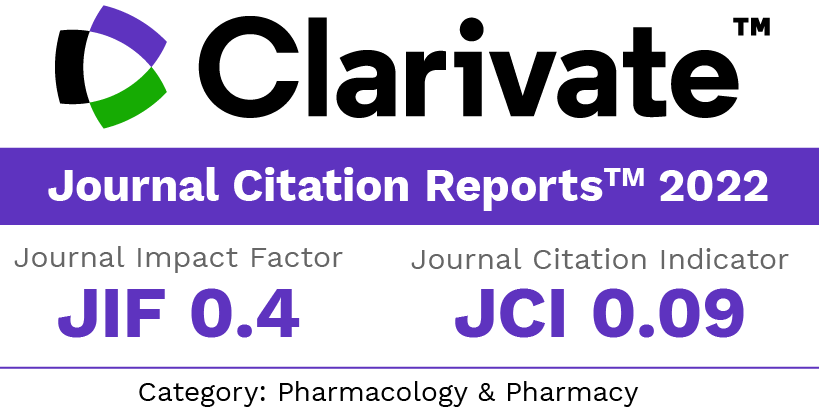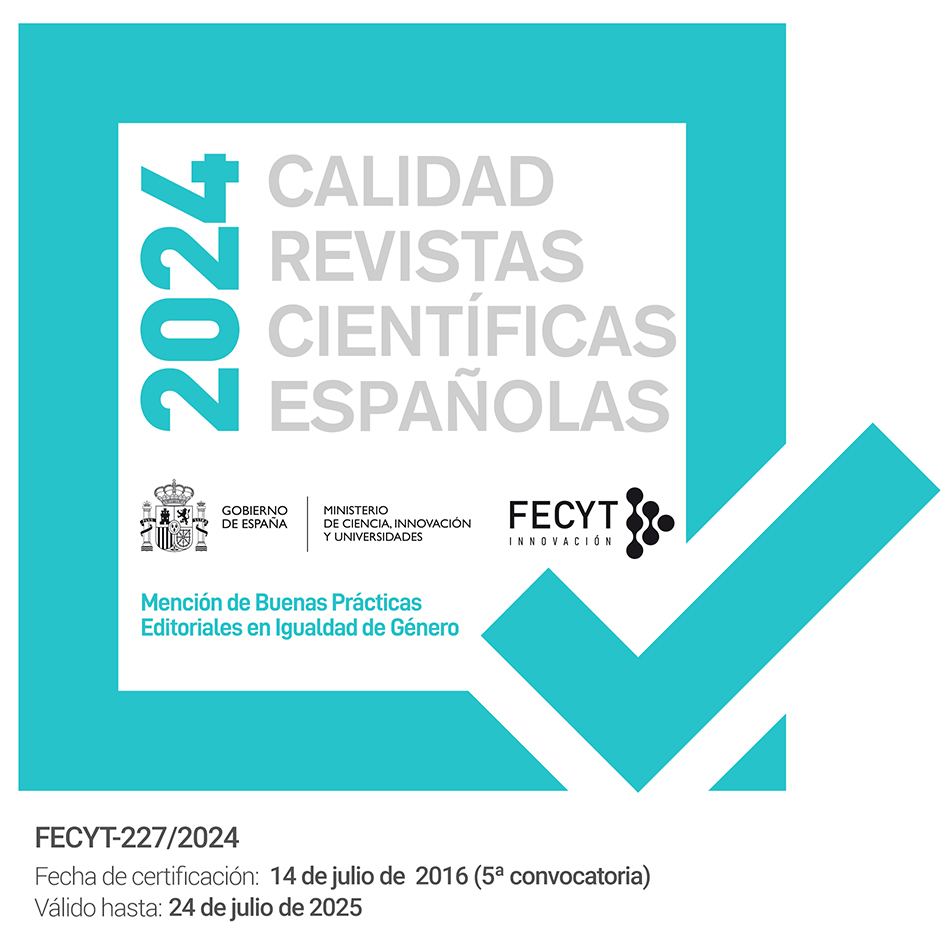Kinetic study of the photodegradation of p-hydroxybenzenediazonium ion in polar media
Keywords:
p-hydroxybenzenediazonium, Photodecomposition, Aryl cation, Kinetic analysisAbstract
A study on the photodecomposition of p-hydroxybenzenediazonium ion (PDQ) has been made using chromatographicand spectrophotometric data obtained from UV-irradiated (254 nm) PDQ solutions in acetonitrile and aqueous media.The HPLC and HPLC-mass results indicate that 4-acetamidophenol is the main product formed after the irradiationof PDQ in acetonitrile. This is explained as a consequence of the initial formation of the aryl cation which is laterinvolved in a Ritter’s reaction. A kinetic analysis of the spectrophotometric data reveals that PDQ photodegradation isfaster in acetonitrile (observed rate constant (kobs) = 0.1442 s-1) than in acidifi ed acetonitrile (kobs = 0.009 s-1) indicatinga higher photostability of the protonated species derived from PDQ. The second order constant (0.062 M s-1) found forthe PDQ photodecomposition in phosphate buffer (pH 7) is explained in term of the equilibrium between protonatedand non-protonated species coming from the acid dissociation of PDQDownloads
References
Toth B, Patil K, Erickson J, Gannett P. Cancer induction using different administrations of benzenediazonium sulfate in mice. In Vivo 1999; 13: 125.
Quintero B, Morales J.J, Quiros M, Martínez M.I, Cabeza M.C. Dediazoniation of p-hydroxybenzenediazonium ion in a neutral aqueous medium. Free Rad.Biol&Med. 2000; 29: 464.
Quintero B, Cabeza M.C, Martínez M.I, Gutiérrez M.P, Martínez P.J. Dediazoniation of p-hydroxy and p-nitrobenzenediazonium ions in an aqueous medium. Influence of the chelating agent diethylenetriaminepentaacetic acid. Can. J. Chem. 2003; 81: 832.
Quintero B, Martínez Puentedura M.I, Megías M.T, Cabeza M.C, Gutiérrez M.P, Martínez de las Parras P.J. Oxidative effects induced by dediazoniation of the p-hydroxybenzenediazonium ion in a neutral aqueous medium. J. Chrom. A 2004; 1035: 227.
Zollinger H. En “The Chemistry of Triple-bonded Functional Groups”, Supplement C: Patai, S., Rappoport, Z., Eds,: Wiley: New York,; Parte 1, Capítulo 15, pág. 603; 1983.
Hori K, Sonoda T, Harada M, Yamazaki-Nishida S. Theoretical study on the reactivity of phenyl cation with a propyl group at Ortho-position. Tetrahedron. 2000; 56: 1429.
Winkler M, Sander W. Isolation of the phenyl cation in a solid argon matrix. Angew. Chem., Int. Ed. 2000; 39: 2014
Winkler M., Sander W. Generation and Reactivity of the Phenyl Cation in Cryogenic Argon Matrices: Monitoring the Reactions with Nitrogen and Carbon Monoxide Directly by IR Spectroscopy. J. Org. Chem. 2006; 71: 6357
Danêk O, Snobl D, Kniêk I, Nouzová S. Diazotierung der aminophenole in konzentrieter fluorborsaüre. Coll. Czec. Chem. Commun. 1967; 32: 1642.
Braun M.A, Maurette M.T, Oliveros E. Technologie Photochimique. Lausanne: Presses Polytechniques Romandes; 1986
Morales J.J. Estudio del proceso de desdiazoación del tetrafluoroborato de p-hidroxibencenodiazonio en medio acuoso
neutro: Tesina de Licenciatura. Universidad de Granada; 1997
Milanesi S, Fagnoni M, Albini A.(Sensitized) photolysis of diazonium salts as a mild general method for the generation of aryl cations. Chemoselectivity of the singlet and triplet 4-substituted phenyl cations. J. Org. Chem. 2005; 70: 603.
Fagnoni M, Albini A. Arylation Reactions: The Photo-SN1 Path via Phenyl Cation as an Alternative to Metal Catalysis. Acc Chem Res. 2005; 38: 713.
Ritter J.J, Minieri P.P. New reaction of nitriles. I. Amides from alkenes and mononitriles. J.Am.Chem.Soc. 1948; 70: 4045.
de Lijser H.J.P, Arnold D.R. Experimental and theoretical investigations into the addition of cations, radicals, and radical cations to nitrile. J. Phys. Chem. A. 1998; 102: 5592.
Szele I, Zollinger H. Dediazoniation of arenediazonium ions in homogeneous solution. Part XII. Solvent effects in competitive heterolytic and homolytic dediazoniations. Helv. Chim. Acta. 1978; 61: 1721.
Downloads
Published
How to Cite
Issue
Section
License
The articles, which are published in this journal, are subject to the following terms in relation to the rights of patrimonial or exploitation:
- The authors will keep their copyright and guarantee to the journal the right of first publication of their work, which will be distributed with a Creative Commons BY-NC-SA 4.0 license that allows third parties to reuse the work whenever its author, quote the original source and do not make commercial use of it.
b. The authors may adopt other non-exclusive licensing agreements for the distribution of the published version of the work (e.g., deposit it in an institutional telematic file or publish it in a monographic volume) provided that the original source of its publication is indicated.
c. Authors are allowed and advised to disseminate their work through the Internet (e.g. in institutional repositories or on their website) before and during the submission process, which can produce interesting exchanges and increase citations of the published work. (See The effect of open access).


















